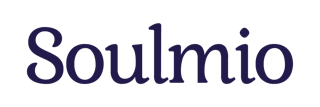Remote motivation: Key Strategies for Building Remote Team Engagement
January 28, 2025


The days of face-to-face meetings and kitchen chats are a distant memory for a large number of employees. Face-to-face meetings have been replaced by ZOOM and gossip sharing has moved into chat rooms. The mood of the team is no longer as easy to read, and engagement is down in many remote and mixed teams. How do you build company culture and engagement in such an environment? Is it even possible?
Employee Experience
Employee experience is the overall impression an employee takes away from their work. All interactions, company culture, office mood and workload contribute to the employee experience. This experience then influences the overall well-being, motivation and engagement of the individual within the company.
Employee experience influences:
- employee well-being
- engagement (commitment / involvement in the team)
- turnover
- productivity
With the growing popularity of remote and hybrid working models, engagement has declined at 40% of companies and 37% of companies feel a negative impact on company culture.
In the office, you control almost all factors of the employee experience. You have a better overview of the mood of the team. You have more tools at your disposal to drive employee engagement. Creating a positive employee experience has never been easy, but in the age of remote and hybrid teams, it's more difficult than ever. Employers today must create a good employee experience with a radically different set of tools - and many are learning as they go.
Employees with positive experiences are engaged, put in more effort, do a better job, and stay with their companies longer.
Strategies for building a positive employee experience in remote teams
Clear, regular and open communication is essential
It's impossible to keep track of what's going on with each individual on a team - especially in a remote setting. That makes it all the more important to get communication right. Especially in hybrid teams, where only certain team members work from the office, remote employees can feel isolated and excluded. Foster a sense of belonging and set up clear, regular and open communication and optimize it for the online environment:
- Schedule regular check-in meetings and regular 1:1 meetings with your direct supervisor.
- Start meetings with non-work topics - small talk is very important in building relationships.
- Use the same communication tools for all employees.
- Ensure that all employees are informed equally often and in the same way about common goals and company events.
- Actively listen - taking action on employees' needs, wants, questions or concerns is a critical factor in making them feel heard and understood.
- Maintain a two-way feedback loop.
- Hold regular team meetings and create a space for sharing and informal chats.
- Create a virtual open door culture - keep team members informed and remind them regularly that your virtual door is always open.
Tip: Informal online meetings are different from after-work beers in the pub next to the office. Once the ice is broken, the fun can flow much the same as in a face-to-face meeting, but in an online environment you always need to have structure and activities or games in place. Take advantage of the opportunities online meetings offer and do things like an afternoon of anonymous confessions, a company competition for the cutest pet, cooking together or perhaps a series of workshops where everyone can share their off-the-job skills.
Workflow must run like clockwork
When team members are not sitting in the same office, sharing know-how is not so easy. You can no longer just ask a colleague across the aisle: "How do we do the invoices, please?" For remote teams, it's crucial that everyone has access to the tools they need and clear documentation with internal processes.
- Choose a platform where all important information, processes and documents are clearly stored.
- If you don't have clearly defined processes and workflows, set them up - everyone needs to be clear about what is expected of them, how they should act in specific situations, or when, where and to whom they should submit work.
- For remote teams, having a tool to track the status of projects and tasks is key. Everyone should be able to easily find what stage a project or task is in. Status-update meetings are finally over!
- Make sure everyone has access to all the tools, documents and information they need to do their job.
- Create a clear company hierarchy and communication rules so that everyone knows exactly what, where and who to contact.
Tip: As much of the above as possible should happen on one platform. There are a multitude of solutions on the market today - just choose the one that meets your requirements.
Customize onboarding
A well-configured onboarding is much more important for remote employees than for others. While in the office, an employee can learn on the go, asking questions and learning from colleagues, remote employees need a detailed and complete onboarding process. In addition to workflow documents and tools, prepare a thorough onboarding process for remote employees. At the end of it, the new team member should feel confident, know exactly what to do, what is expected of them, and who to turn to in what situations. Don't forget to have a series of meetings to introduce him or her to everyone and give plenty of space for questions.
Take care of your mental well-being and promote life-balance
With the growth of remote working, the focus on productivity and performance of remote workers has also increased. And maintaining a healthy life-balance is much more challenging when working from home.
Although remote employees are 22% more likely to be happy in their jobs than those who work in an office. (Owl Labs, 2020) But at the same time, 54% of telecommuting employees feel overworked and 39% feel exhausted. (Microsoft, 2021)
Looking after the mental health of all employees is more important than ever. Workshops, seminars and mental health days are an important preventive measure, and therapy sessions help in times of crisis. Be supportive of your employees and help them maintain a healthy life balance - you'll be rewarded with happy, engaged and motivated employees.
You don't have to do it alone
Soulmio's online mental health care programme for businesses provides quick psychological help and long-term prevention through articles, videos, online broadcasts, meditations and support groups. We will tailor the program combination to your needs, help you with an implementation plan, introduce the online program to your employees, and provide you with support materials for internal communication.
Neuroscience in Action: How to Work Smarter and Build a Healthier Workplace
In this interview, neuroscientist Prof. Aleš Benjamín Stuchlík explains how the brain shapes the work of managers and organizations. You will learn why multitasking is a myth, how prolonged stress undermines performance, and why interruptions cost more than we think. He also highlights the importance of sleep, micro-breaks, and celebrating small steps. Stuchlík offers practical advice on using brain science for more effective work, employee development, and a healthier company culture.
A Doctor’s Take on Burnout: From Depression to Recovery
Burnout syndrome is a complex state of physical, emotional, and cognitive exhaustion caused by prolonged stress and work overload. In this interview, addiction specialist Adam Kulhánek shares practical insights. You’ll learn what happens in the brain and body under chronic stress, how burnout differs from depression, common self-treatment strategies and their risks, as well as the role of recovery duration, physical health, and lifestyle. At the end, the doctor offers his own tips for maintaining mental resilience and balance.
Through the Eyes of the Experts: How Gen Z is Changing the Workplace
Generation Z enters the labour market with different expectations and priorities than their predecessors. They are looking for meaningful work, work-life balance and an authentic company culture. How is this generation changing the ways in which companies approach the workplace and management?



